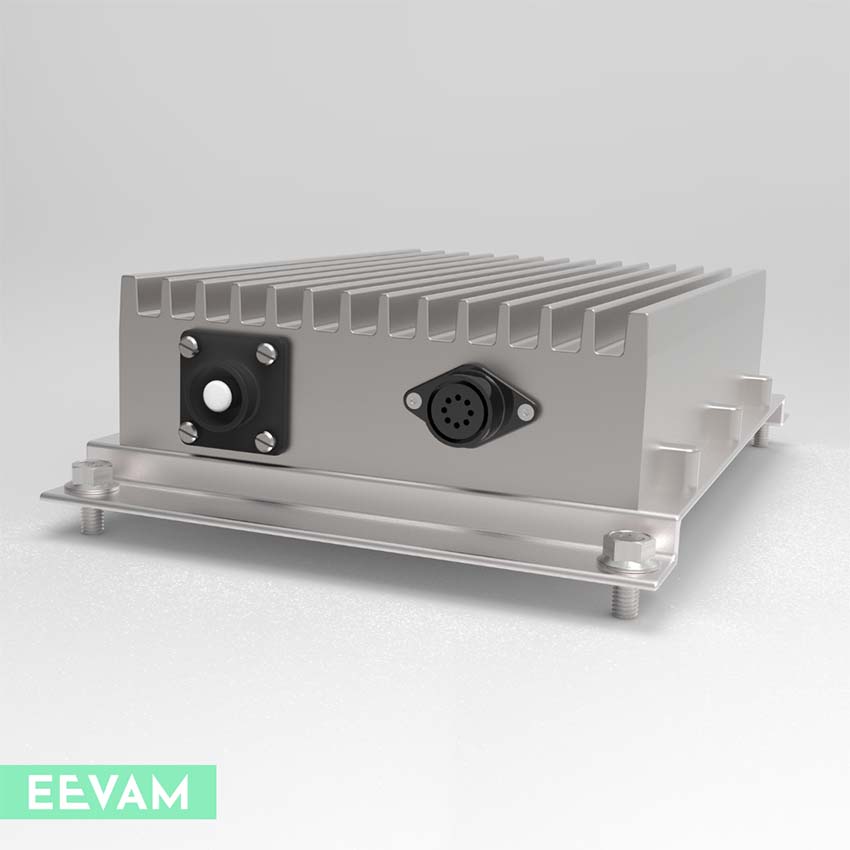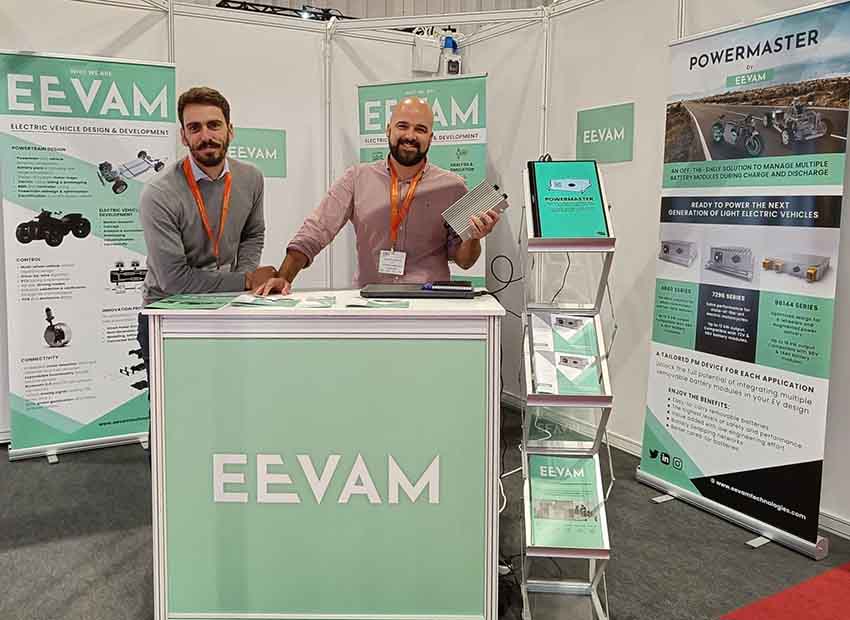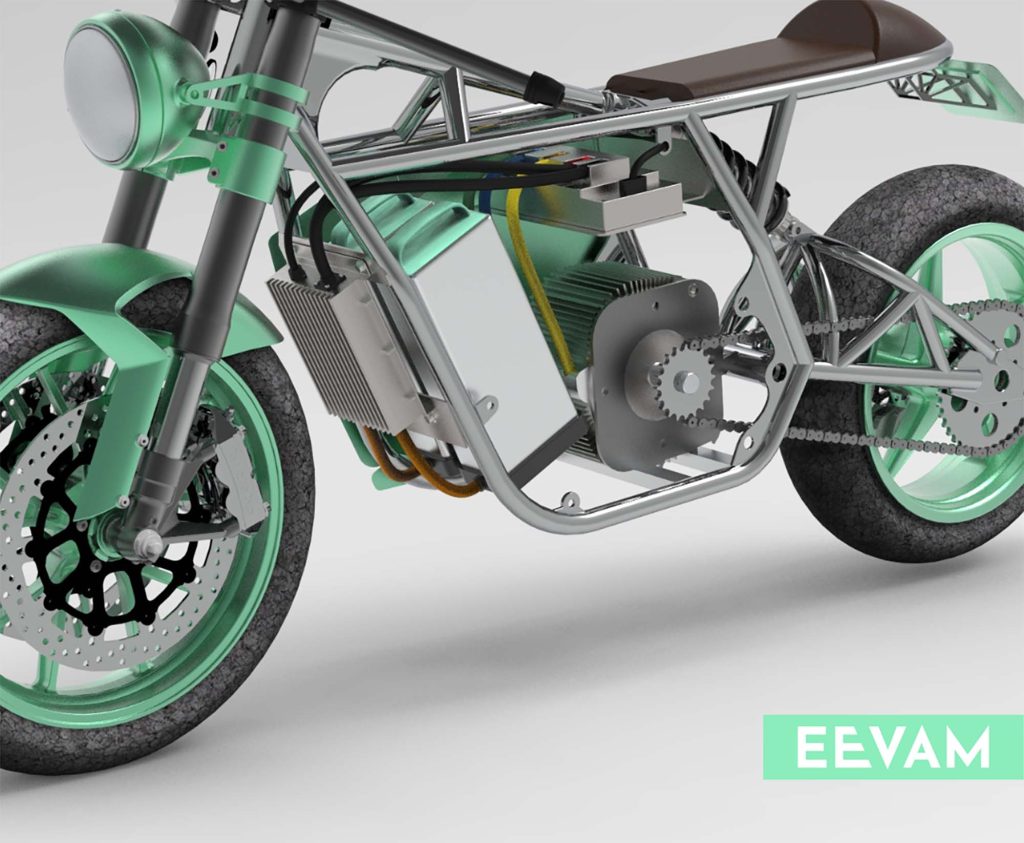EEVAM Technologies is an engineering company specialised in light electric vehicle development and EV powertrain components. They offer engineering services to a broad range of clients, from traditional manufacturers in their first steps towards electrification to young start-ups with groundbreaking projects.
EEVAM’s R&D department has been working for years on several research lines focusing on the next generation of LEVs, analysing trends and creating solutions to upcoming challenges in the sector.
One of these research efforts evolved into their patent EEVAM POWERMASTER technology, which represents the core of their latest product line of Smart Power Distribution Units conceived for electric motorcycles and light quadricycles with removable battery module architectures.
Interview with Rafel Suárez-Varela, Chief Commercial Officer (CCO) at EEVAM Technologies.
Easy Engineering: What are the main areas of activity of the company?
Rafel Suárez-Varela: Our activity can be divided into three main areas: Electric Powertrain Component Development, Engineering Services and R&D.
The product development team designs, manufactures and supplies smart and efficient components for electric powertrains, specializing in bringing cutting-edge technology to Light Electric Vehicles.
Through our engineering services, we create tailored solutions and provide engineering support in the areas of powertrain, chassis and control algorithms. Our multidisciplinary and agile team can address the needs of companies of all sizes, no matter the stage of the project.
Our R&D department currently focuses its activity on four main areas:
- Smart Power Distribution Systems
- Next Generation Drivetrains
- Connected Safety Systems
- Modelling, Software and AI

E.E: What’s the news about new products?
R.S.V: Our new products are Smart Power Distribution Units featuring our EEVAM POWERMASTER technology, an intelligent power distribution solution for electric vehicles with two or more battery modules that allows to operate them simultaneously.
By integrating an EEVAM POWERMASTER device in a vehicle, the OEM will benefit from an off-the-shelf solution to manage multiple removable battery modules during charge and discharge process.
This technology offers multiple benefits for end-users, allowing to split a heavy battery module into two smaller and lighter removable units without compromising the performance of the vehicle, as the algorithm will ensure the user can always demand the maximum available power to guarantee an optimal experience. The systems also provide an added layer of safety, as it is tuned to the battery cells’ specifications and acts as a safeguard, implementing current limits and avoiding high peaks that can potentially damage cells.
Additionally, the algorithms extend the battery’s life, which benefits electric vehicle owners, OEMs, and fleet managers. This also increases the potential for battery recycling and second-life applications, which contributes to EEVAM´s commitment with sustainable mobility electrification.
E.E: What are the ranges of products?
R.S.V: EEVAM POWEMASTER devices are organized into two different models depending on the battery module voltage:
- 4860 Series: The best choice for 48- and 60-volt systems with a continuous output power of up to 6 kW.
- 7296 Series: Aimed at the 72- to 96-volt range, with a continuous output of up to 12 kW.
E.E: At what stage is the market where you are currently active?
R.S.V: Mobility sector is vast, encompassing everything from scooters to buses, including cars and motorcycles. It includes both personal-use vehicles and commercial fleets, as well as new Mobility as a Service (MaaS) platforms.
In each of these cases there is a clear trend in recent years towards a transition to electric mobility promoted by governments in various countries, that will only be efficient if there is corresponding demand from potential customers.
However, the current state of technology in electric vehicles is not enough to meet the needs and expectations of customers. The sector still faces some challenges, such as:

The current high cost of electric vehicles compared to internal combustion engine vehicles (ICEV). Currently, for a significant number of vehicles, approximately 50% of the total cost comes from the cost of the batteries. Therefore, significant technological development associated with batteries is needed, ranging from material extraction techniques to improving the design and development of vehicle battery packs, as well as progress in cell manufacturing and the development of new chemistries.
Reaching right levels of autonomy for consumers that can only be achieved with advanced technological designs, both in the battery field and in the overall efficiency of the vehicle (including aerodynamics, engine efficiency, control algorithms, etc.).
Fast charging, which would allow a full battery charge in less than 20 minutes, is still far away from a frequent use without causing significant battery degradation.
Regarding the power distribution component market specifically, currently there is no off-the-shelf alternative comparable to our products, which led manufacturers with no other options than investing in costly developments to come up with their own solution to the modular battery performance question. Our devices fill that market gap, representing a ready-to-integrate and customizable alternative for OEMs and fleet management companies.
E.E: What can you tell us about market trends?
R.S.V: It is expected that electric vehicles will increasingly gain ground over ICEV year by year on a global level, with plug-in hybrid vehicles maintaining a moderate market share. This will result in a significant increase in the range of electric vehicles, a more extensive charging infrastructure network on both highways and urban areas with a higher number of fast chargers, and more competitive prices as battery technology improves and mass production increases.
Another important trend of this new mobility scenario is MaaS, through which sharing services with various types of vehicles (scooters, bicycles, motorcycles, or cars) are establishing in cities. In this way, users are increasingly opting for multimodal transportation, where journeys from one point to another are carried out through a combination of different modes, rather than using a single vehicle.
Therefore, MaaS and multimodal transportation require vehicles with specific technological features and designs, to which manufacturers must adapt if they want to be successful.
One of the most notable trends in the electric two-wheeler sector is the adoption of battery swapping platforms. In this regard, Asian markets like China, India, and Taiwan are clearly leading in terms of commercial adoption of these solutions. The Big Four Japanese motorcycle OEMs have also shown interest in this technology, integrating their ongoing electric vehicle developments with battery swapping systems and adopting a standardized cross-brand battery pack.
Considering all of the above, it can be understood that there is an urgent need for manufacturers of any type of vehicle to stay technologically up-to-date and/or to collaborate with external specialist companies like EEVAM to undertake the development of their future projects.

E.E: What are the most innovative products marketed
R.S.V: To date, the main product offered by EEVAM has been engineering services for OEMs and startups, where we make available to the customer all the knowledge we have generated around electric vehicles over the past few years. In this sense, we have worked in a wide-range of electric vehicles projects like powertrain design and development, control algorithms developments and market research studies.
EEVAM POWERMASTER is a product that we have been working on for the past three years and will be EEVAM’s first product to enter the electric vehicle market.
E.E: What estimations do you have for the rest of 2023? 2024?
R.S.V: EEVAM’s plan for the rest of 2023 and for 2024 is to keep establishing long-term relationships with LEV manufacturers through the expansion of our product portfolio and engineering services.
At the beginning of 2024 we expect to sign agreements with different OEMs with the aim of carrying out pilot programs where our customers can test the benefits of our technology in their own electric vehicles and sign commercial agreements to supply the first units of EEVAM POWERMASTER.
Our goal is to become a key partner for OEMs, offering our expertise and know-how in EV design and supporting them in their transition towards electric mobility.

